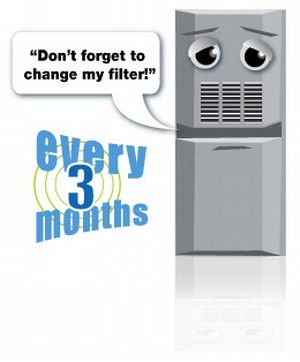News and Events
January 9, 2009

5 Ways to Cut Heating Costs
If you're thinking it's
time to do something about your cold house and your high heating bills, here
are five win-win suggestions that will help you do both.
1. REPLACE YOUR FURNACE
FILTER
A clogged filter makes your furnace work harder to deliver the same amount of
heat, which wastes energy by keeping the furnace on for a longer period in
order to bring the house up to the requested temperature.
If you have a central
heating system (used for heat only), replace the filter once a year, at the
start of the heating season. If you have a heat pump or a furnace with central
air conditioning, replace it twice a year, at the start of the heating season
and at the start of the cooling season. While replacing the filter, always use
a shop vacuum to clean up as much dust and debris within the filter cavity as
you can reach.
2. INSTALL A PROGRAMMABLE
THERMOSTAT
Programmable thermostats work a whole lot better than your memory. They give
you the ability to have a lot more control over your heating and cooling
systems, and they will add both convenience and energy savings by raising and
lowering the heat at preset times so you don't have to remember to do it.
A programmable thermostat
will bring the system on and shut it off based not only on temperature, but on
time as well. For example, the thermostat can be programmed to turn on the heat
to a certain level at 6 a.m. when you get up, and turn it down again at 8 a.m.
when you leave for work. It can also be set for different cycles on different
days of the week, and can be overridden with the touch of a single button to
temporarily raise or lower the heat.
3. INSULATE DUCTWORK
Since the ducts are running through an unheated space, whether in your attic,
crawlspace, basement or garage, duct insulation is a huge part of the system's
ability to retain heated air within the ducts until it gets delivered into the
house. All of the ducts in unheated spaces should be completely wrapped without
any gaps, and the insulation should be of sufficient thickness to provide good
insulating value -- typically around R-8, which is approximately 2 1/2 inches
of fiberglass.
4. CLEAN WALL AND BASEBOARD
HEATERS
As with a central furnace, it's very important that wall heaters and baseboard
heaters be cleaned at the start of every heating season. Before cleaning,
however, first try to minimize the potential for dust buildup in the heaters.
This might be done by rearranging furniture, increasing fresh air in the room,
or increasing air flow in front of the heaters.
To clean baseboard heaters,
first shut off the circuit breaker that supplies power to the heater. To be
certain you have the correct breaker, turn the thermostat up to high for 30 seconds
or so and make sure that the heater does not come on. Remove the front cover
and use a vacuum to clean out the inside of the heater, being careful not to
damage the aluminum fins inside the heater. If you notice that the fins are
bent, you can use a fin comb, available through many heating contractors and
other retailers of heating equipment, to straighten them out again.
For wall heaters, shut off
the circuit breaker for the heater, and verify that it's off as described
above. Remove the screws that hold the grill in place, and remove the grill.
Wash the grill in hot soapy water, dry it, and set it aside. You can then clean
the inside of the heater using a vacuum, taking care not to touch the heating
elements, or you can blow out dust using the blower side of your shop vacuum.
Note: Be sure to refer to
the instruction book that came with the heater, or check with the
manufacturer's Web site for specific cleaning instructions and safety
precautions.
5. COVER AND WEATHERSTRIP
ROOM AIR CONDITIONERS
If you have a room air conditioner that sits in a window or mounts into an
opening in the exterior wall, they have the potential to leak a lot of air. If
the air conditioner is in a window and is easy to remove, your best bet is to
remove it, clean it and then store it for next summer.
If it's not easily removed,
then examine the unit carefully to see if there is any daylight coming in
around it. You can use foam tape, expandable spray foam or other
weather-stripping materials to close up the gaps around the case. Finally, buy
or build a cover that will slip over the unit from the outside and prevent cold
air from coming through it and into the house.








